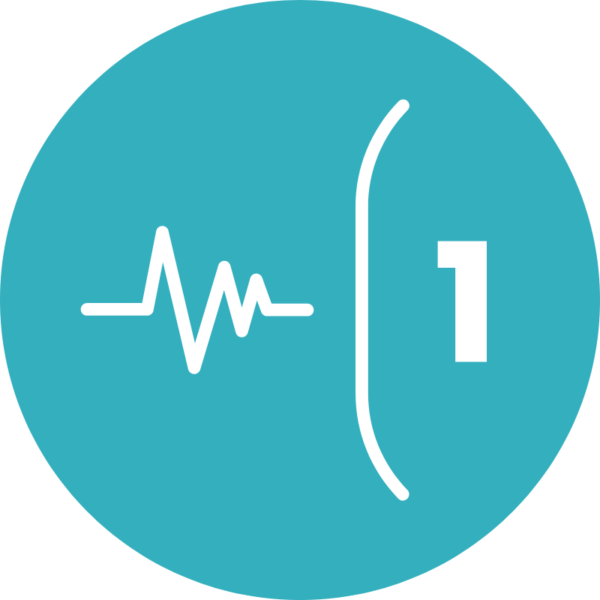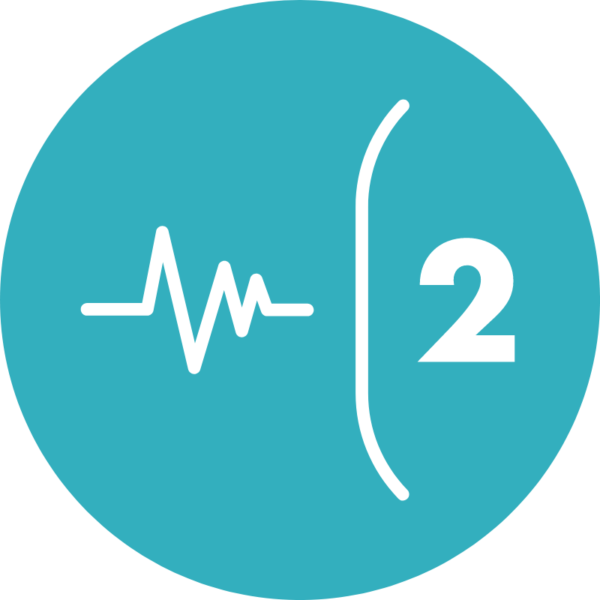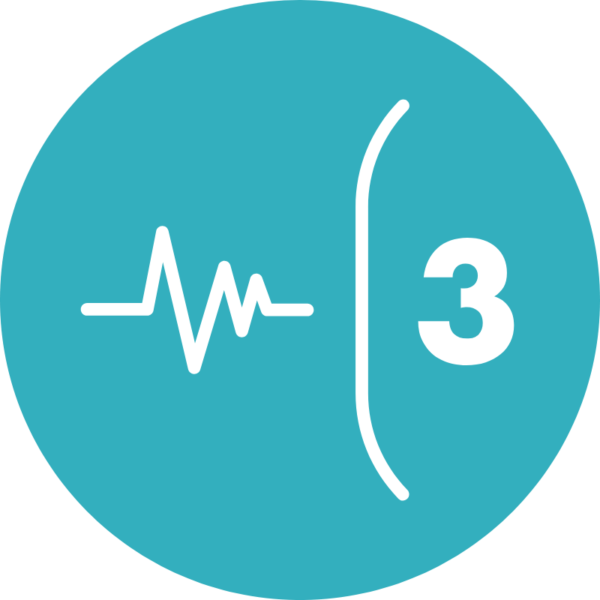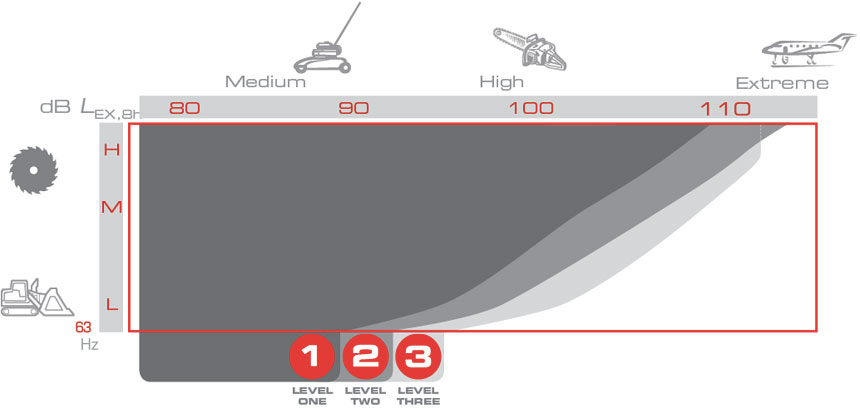Attenuation levels
To simplify the choice we have divided the protectors into three levels.

LEVEL 1
Good attenuation that suits a low noise level in industrial environments. Especially good attenuation at medium and high frequencies.

LEVEL 2
Higher attenuation in both low and high frequencies, for a more demanding noise environment.

LEVEL 3
Extra high attenuation particularly medium and low frequencies.

The table provides a guide to product selection and is based on the expected value of between 70 and 80 dB(A) under the cup. To be absolutely sure you are making the right choice, the noise environment you work in must be measured and calculated together with the hearing protector attenuation values.
It is important to choose protection that does not “over attenuate”. We can only tolerate a certain amount of noise per day before we risk permanent hearing damage. Factors that have an effect are the noise intensity and the time we spend in the noisy environment. For example, we are affected as much by 15 minutes at 100 dB(A) as 8 hours at 85 dB(A). Remember that it is not just in the workplace that your hearing may be affected by noise.
In order to achieve the best hearing protection, it is important to know what levels of noise are in the surrounding environment as well as in what frequencies the sound occurs. This means the noise environment where you work needs to be measured. The results of the measured noise environment are used when choosing your hearing protectors. The recorded attenuation capability of hearing protectors together with the results of the measured noise environment provide a picture of the expected protection given by a pair of hearing protectors.
Well-designed protection has a noise level of between 70 and 80 dB (A) under the cups. This is to prevent being isolated and it should be possible to hear sounds in the surrounding environment. If the right protection is chosen there is a far greater chance that it will be used throughout the shift, which is a prerequisite to obtain the desired protective effect. Even a short period of “carelessness” can seriously reduce the effect of the hearing protection.
The attenuation capability of the hearing protection is described in the methods set out below. The various attenuation
values are stated for each hearing protector in the product section or in the User guide supplied with the hearing protectors.
Octave band method used to determine the attenuation of the hearing protection in terms of average value and standard deviation in the eight octave bands required by the standard.
H-M-L are used to measure hearing protector attenuation in high (H), medium (M) and low frequency dominated (L) noise.
SNR – (Single Number Rating) is a simplified description of hearing protector attenuation. A value is calculated based on the hearing protector’s octave band values.



 Sweden
Sweden Norway
Norway